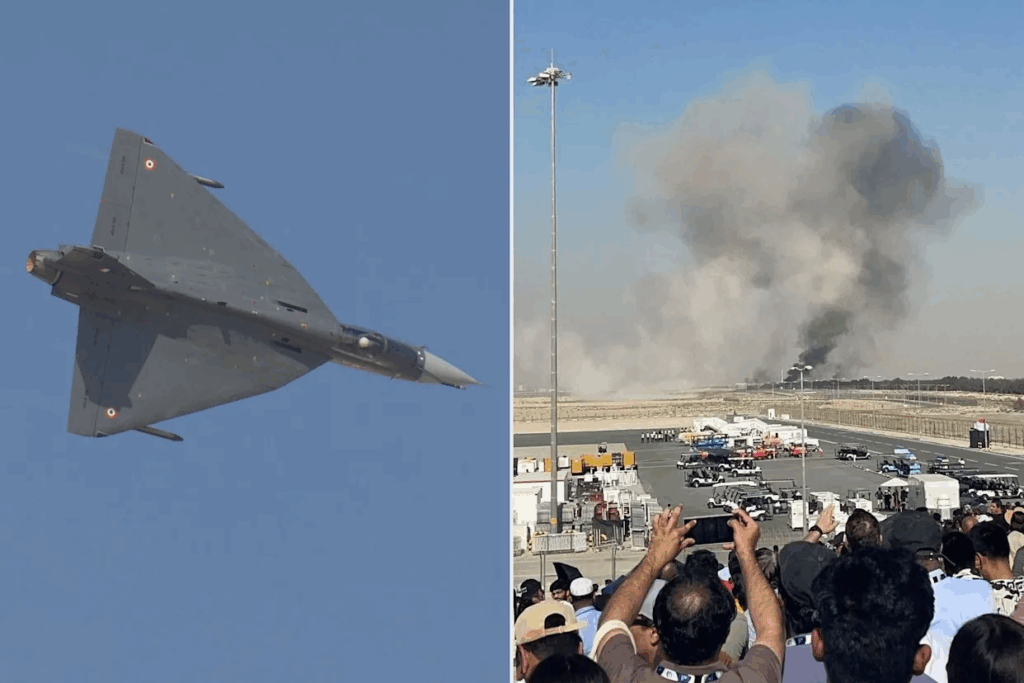A tragic incident unfolded on the final day of the Dubai Air Show 2025 (21 November 2025) when a single-seat HAL Tejas light combat aircraft of the Indian Air Force (IAF) crashed during a live demonstration, killing the pilot.
Incident Details
According to official statements and eyewitness accounts:
- The crash occurred around 2:10–2:15 p.m. (local time) at Al Maktoum International Airport in Dubai, while the aircraft was performing a high-profile aerobatic display before spectators.
- Video and photographic evidence show the jet entering a rapid descent, followed by a large fireball and thick black smoke plume on impact.
- The IAF confirmed that the pilot sustained fatal injuries and died in the crash.
- A court of inquiry has been ordered by the IAF to determine the cause of the accident.

Pilot Profile
The pilot has been identified as Wing Commander Namansh Syal (aged 37), from Himachal Pradesh, India. His death has sparked messages of condolence from Indian authorities and state leaders.

Aircraft and Program Context
- The Tejas is India’s indigenous light-combat aircraft, manufactured by Hindustan Aeronautics Limited (HAL), designed to replace older generation fighters in the IAF.
- This incident marks the second recorded crash of a Tejas aircraft; a prior non-fatal crash occurred in March 2024 near Jaisalmer, India.
- Analysts note the crash comes at a sensitive time for India’s aviation ambitions, which include exporting the Tejas and completing large orders for home-use.
Venue and Show Disruption
The Dubai Air Show is held biennially and attracts global aerospace and defence participation. The crash forced flight displays to be suspended temporarily while emergency teams responded. Authorities confirmed that fire-fighting crews attended the site swiftly and that spectator safety is being reviewed.
Implications and Next Steps
- The IAF’s inquiry will scrutinise flight-data, pilot actions, maintenance records and manoeuvre parameters — initial reports suggest the jet may have been executing a “negative-G” turn at low altitude when it lost stability.
- For India’s defence-industrial base, this crash underscores the risk-profile of public demonstration flights and may trigger additional safety reviews, both for the Tejas programme and future shows.
- For Pakistan and neighbouring states, the incident signals how high-visibility events can carry elevated operational risk — an important factor for regional aviation planning and display-participation strategy.
Reaction from India
The IAF expressed grief and assured support to the family of the deceased pilot. Political leaders and defence officials conveyed condolences. Public commentary emphasised the courage of the pilot and the tragic nature of the accident.
The crash of the Tejas fighter jet at the Dubai Air Show marks a significant aviation tragedy. It raises urgent questions about demonstration-flight safety protocols and reinforces the high stakes involved in showcasing advanced military platforms on the international stage. As the inquiry progresses, the findings may influence not only India’s aviation-manufacture strategy but also the planning and regulation of airshows worldwide.